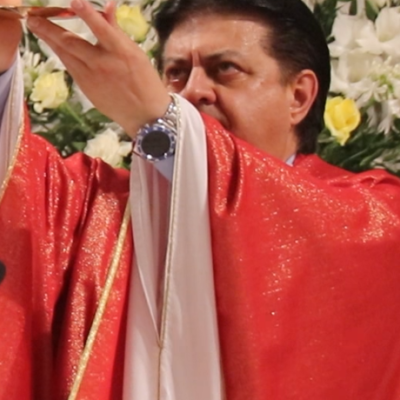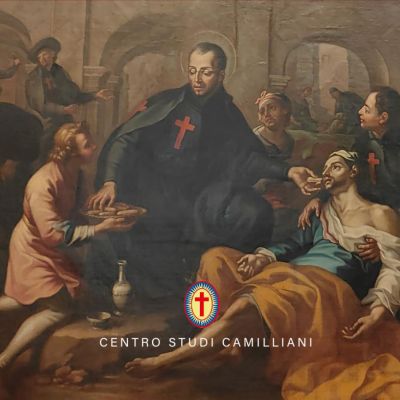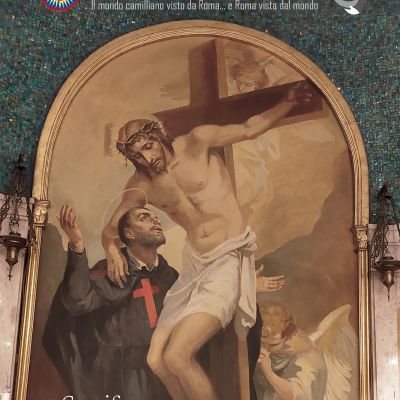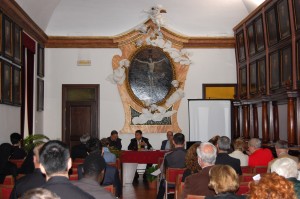 The oratory of the generalate house of the Camillians, which is beautiful, refined, and full of portraits and works of art, opened its doors yesterday to the conference ‘St. Camillus de Lellis and his Friends’ in order to talk, first and foremost, about the saint of the sick in the fourth centenary of his death (14 July 1614), but also to discuss his epoch and the flourishing of religious Orders which, between the Renaissance and the Baroque, gave a new spirituality to the Eternal City which in its turn was translated into churches and artistic masterpieces. The animator and organiser of the conference was Lydia Salviucci Insolera, a lecturer at the Pontifical Gregorian University, who explained this initiative in the following terms: ‘The next year is a jubilee year for the Camillians and I liked the idea of celebrating this saint and at the same time the efforts that the Camilllians have engaged in to conserve their artistic heritage in the best way possible. Theirs is an example to be followed. Lastly, it is an opportunity to investigate the movement of ideas within the various religious Orders between spirituality and art during the great ferment of Rome of that epoch’.
The oratory of the generalate house of the Camillians, which is beautiful, refined, and full of portraits and works of art, opened its doors yesterday to the conference ‘St. Camillus de Lellis and his Friends’ in order to talk, first and foremost, about the saint of the sick in the fourth centenary of his death (14 July 1614), but also to discuss his epoch and the flourishing of religious Orders which, between the Renaissance and the Baroque, gave a new spirituality to the Eternal City which in its turn was translated into churches and artistic masterpieces. The animator and organiser of the conference was Lydia Salviucci Insolera, a lecturer at the Pontifical Gregorian University, who explained this initiative in the following terms: ‘The next year is a jubilee year for the Camillians and I liked the idea of celebrating this saint and at the same time the efforts that the Camilllians have engaged in to conserve their artistic heritage in the best way possible. Theirs is an example to be followed. Lastly, it is an opportunity to investigate the movement of ideas within the various religious Orders between spirituality and art during the great ferment of Rome of that epoch’.
The programme of the conference was a very full one. Acting as the host of the generalate house, the Superior General of the Camillians, Father Renato Salvatore, spoke about St. 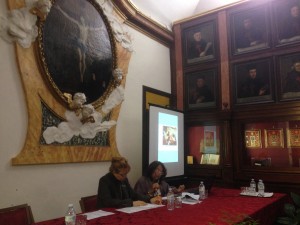


It was then the turn of Felice Accrocca, of the Pontifical Gregorian University, to speak about the Capuchin spirituality which greatly inspired the saint of Abruzzo: ‘As the Father General of the Camillians’, he concluded, ‘he remained in his Rules a Capuchin’.
Father Giovanni Grosso talked about the Carmelite churches in Rome: San Martino ai Monti and the Transpontina. These are churches which St. Camillus certainly saw during his walks in the city of Rome looking for sick people to help.
Lydia Salviucci Insolera then talked about the Rome of St. Camillus seen through the eyes of Ignatius di Loyola, with a list of the many relationships that existed between this Spanish saint and the Roman religious Orders: St. Camillus and St. Ignatius, however, never met because Camillus, when Ignatius died, was only six and still lived in the house where he was born in Bucchianico with his parents. However, when he reached Rome Camillus studied at the Roman College, met St. Bellarmino and, when dying in the infirmary of the generalate house, asked to read only two books: a theological text by Bellarmino and a short book by another Jesuit, Luca Pinelli. In the eternal symbol of the cross – a red cross and a 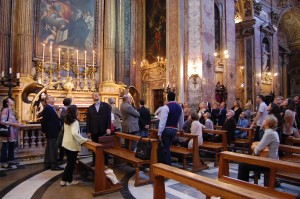


There were many other papers which talked about a Rome of vitality, a Rome rich in spirituality, fecund in works of art, a Rome where new religious Orders were born to bring Masses to the Church and where the bases of modernity were lain. The occasion was also rich because of the opportunity it provided to admire the valuable museum of the Camillians (The St. Camillus de Lellis Museum: editor’s note) and the splendid Church of St. Mary Magdalene.
The press on the activities of the fourth centenary



